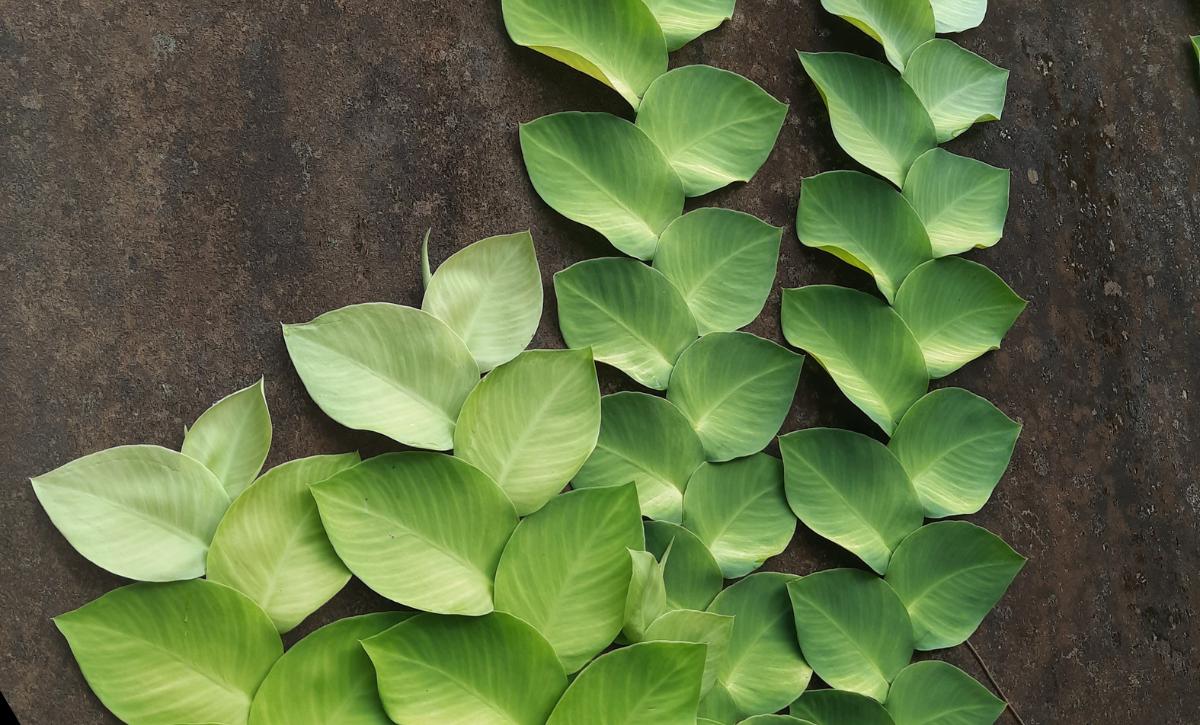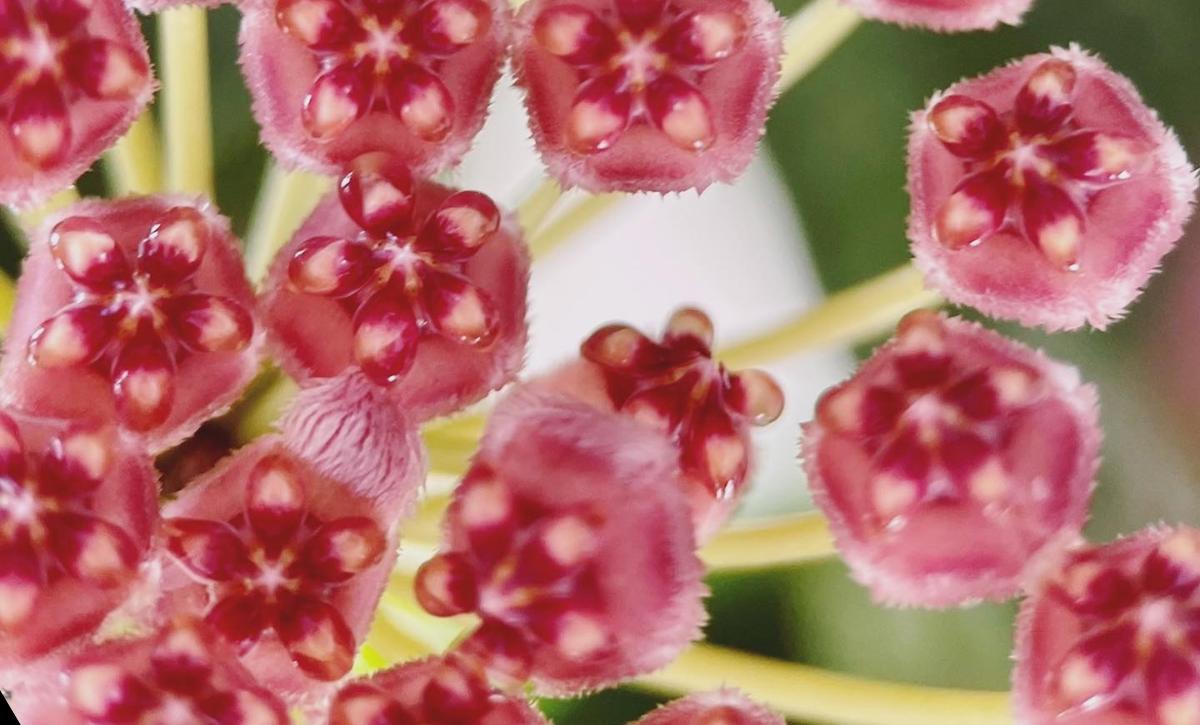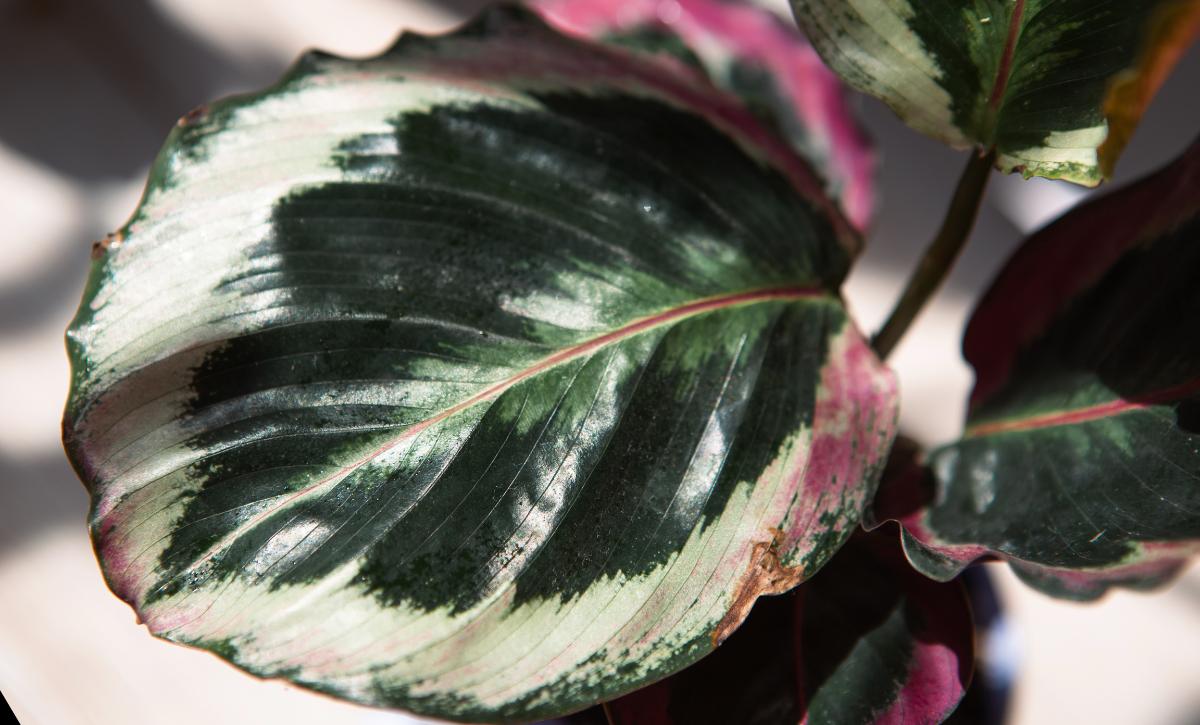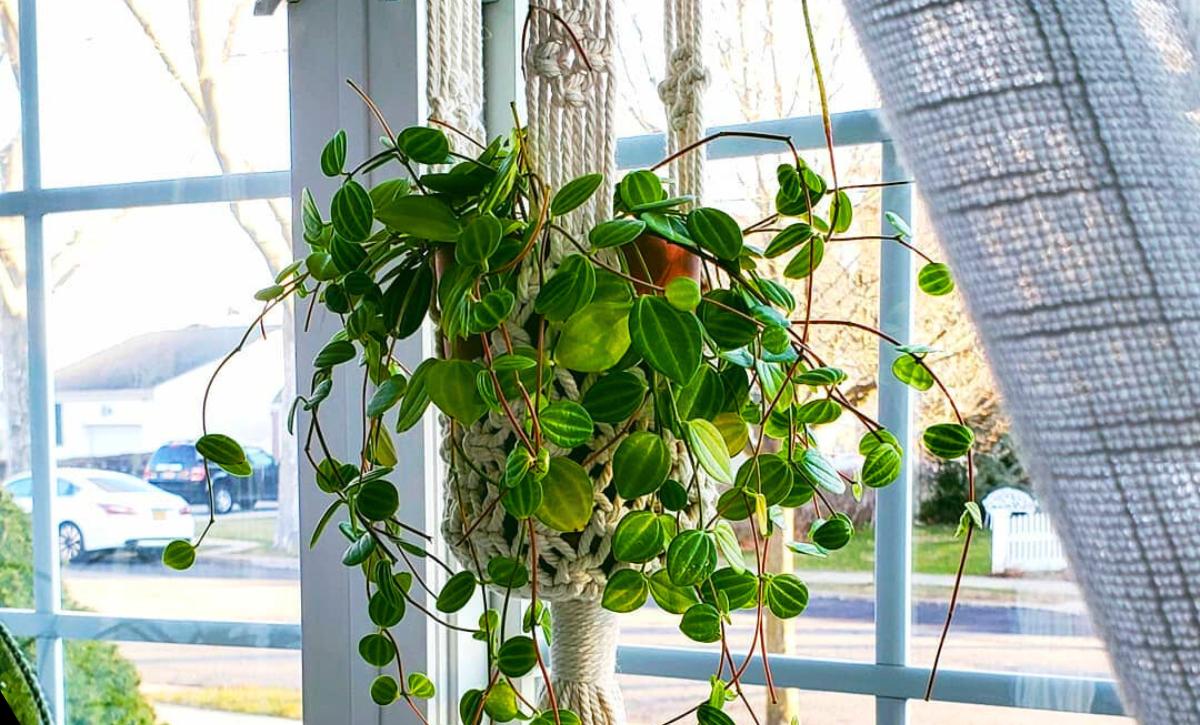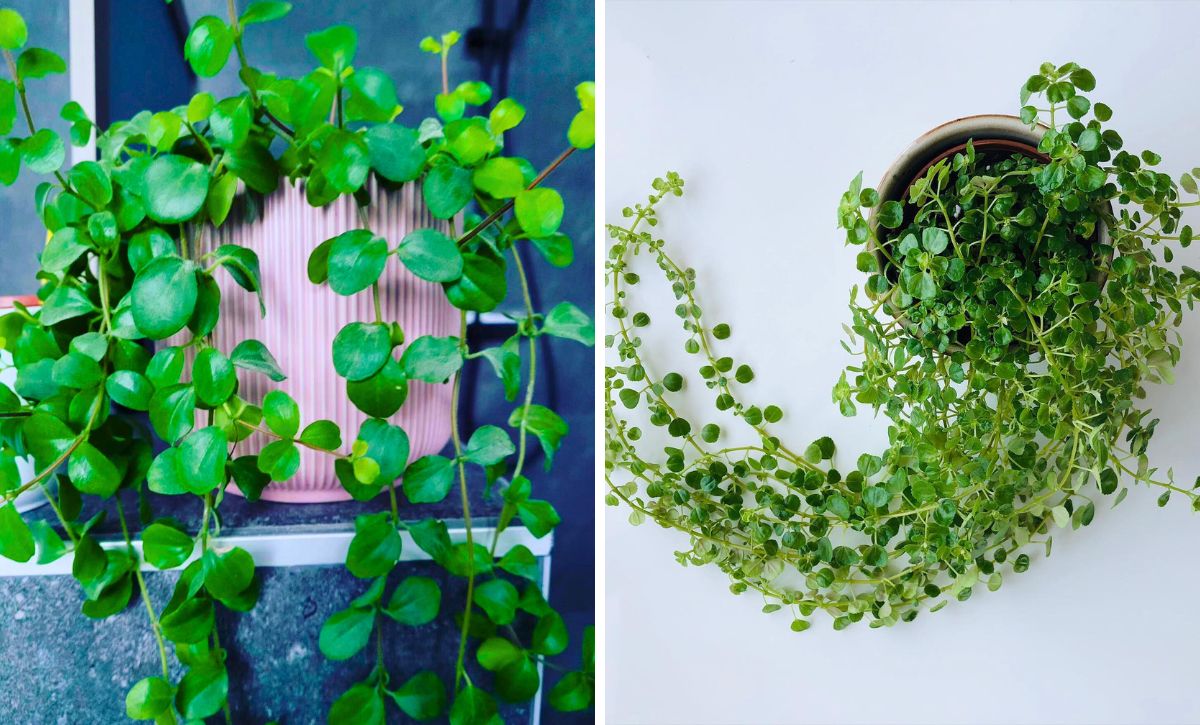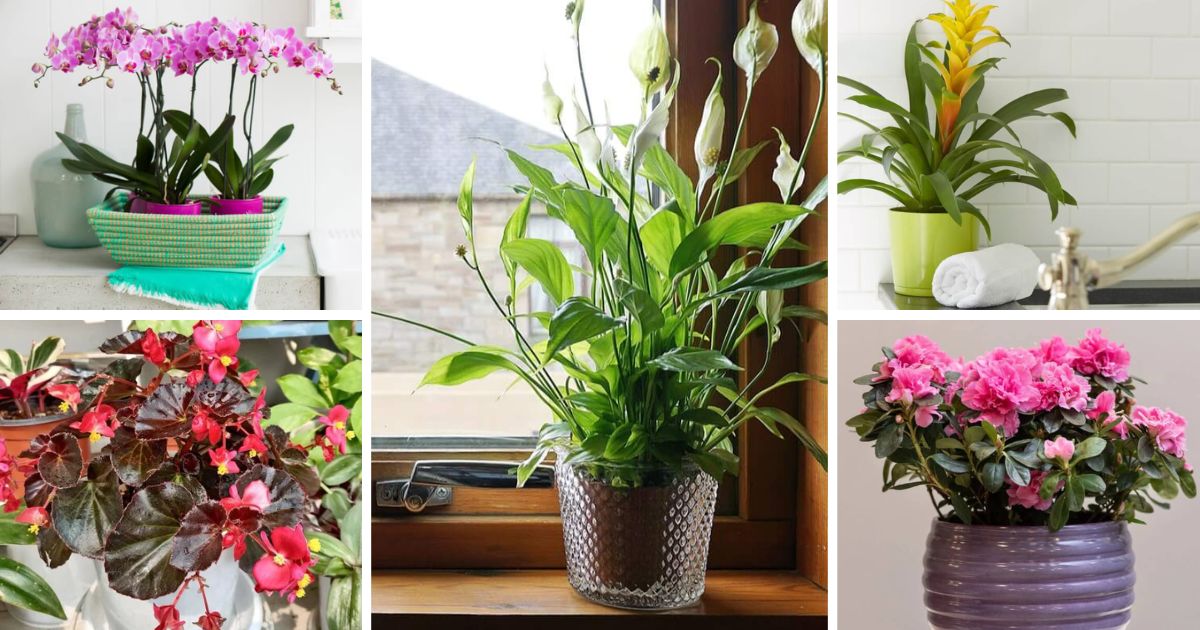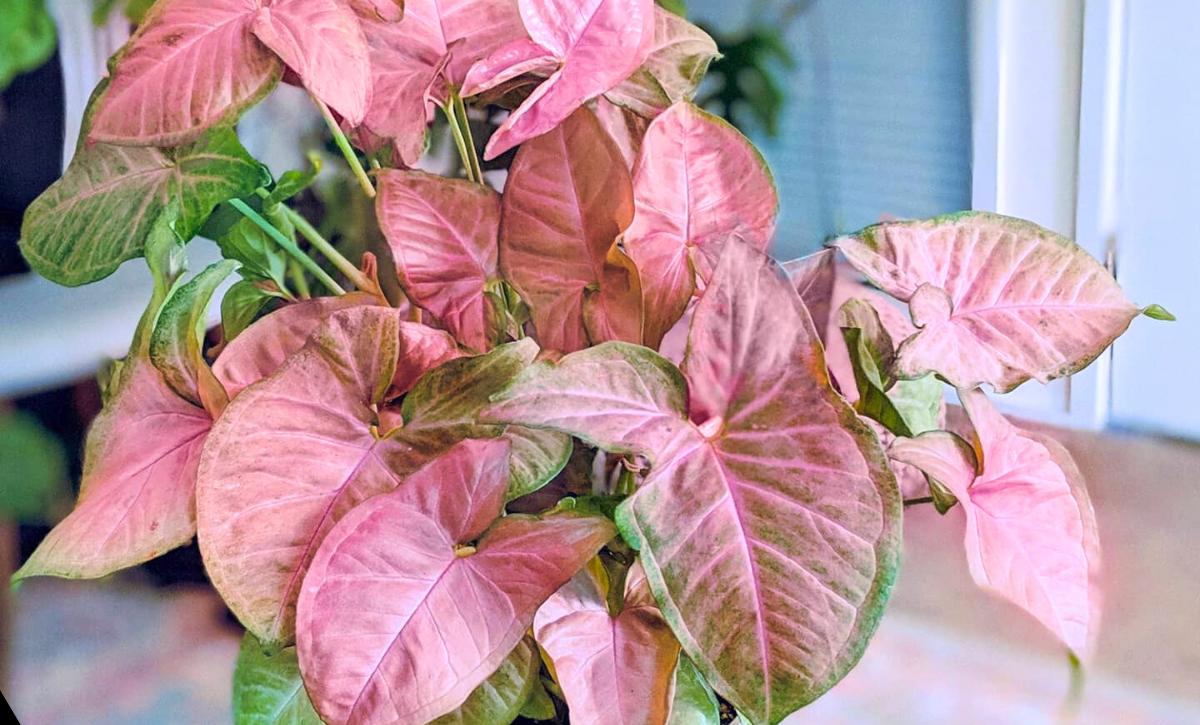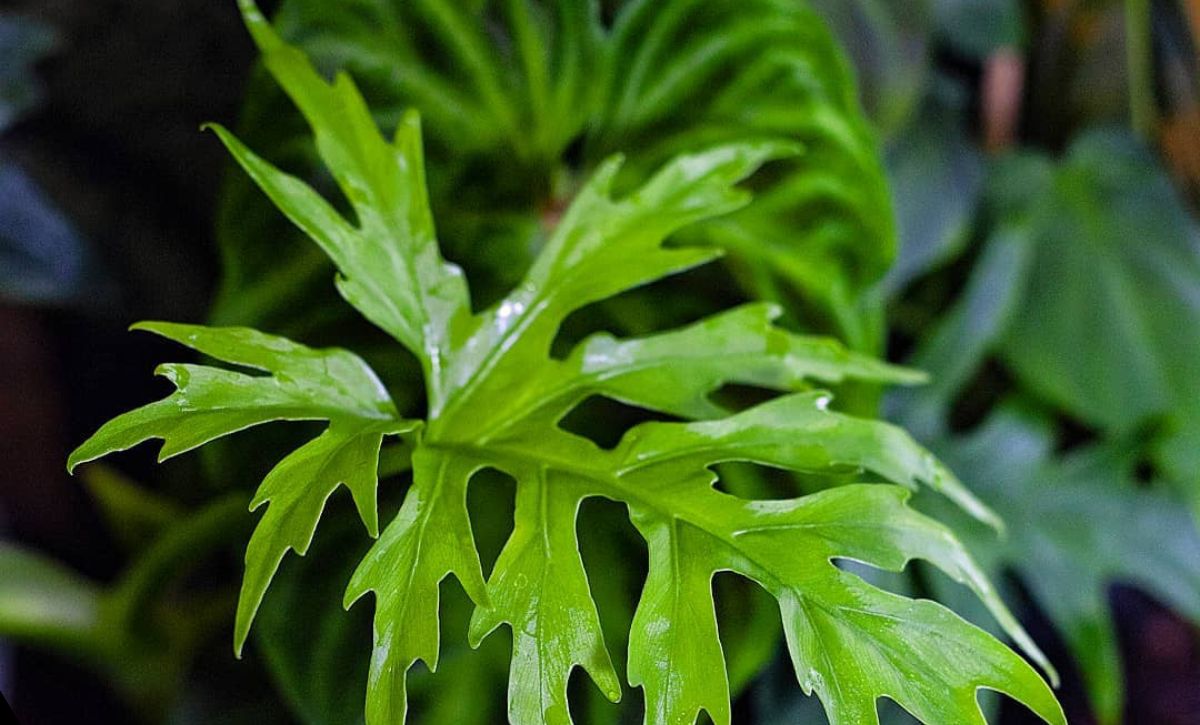Dragons don’t get more real than the dragon tail plant. Unlike the fiery mythical creatures, there’s nothing to be scared of with this plant; at the very least, it doesn’t breathe fire!
This exotic aroid brings the beauty of rainforests to your home and is just mesmerizing to look at.
Here is some basic information to get you well-versed with this plant:
| Scientific name: | Epipremnum pinnatum |
| Native habitat: | Pacific Islands, Southeast Asia, and Northern Australia |
| Growth rate: | Fast grower |
| Size: | When staked indoors, the average height is 3.2 feet (1m). If grown in a hanging basket, the plant can spread up to 10 feet (3m) |
| Type: | Perennial |
| Toxicity: | Toxic |
In this article, we’ve prepared an extensive guide on caring for the Dragon Tail plant. The good news is the plant is incredibly easy to maintain.
You can also learn more about the plant’s origin, benefits, and appearance to extend your knowledge.
What makes the Dragon tail plant interesting is that it’s easy for the eyes and practical.
Let’s get right to it.
Dragon Tail Plant Care Guide

Being a low-maintenance plant, the Dragon Tail plant is a dream come true for beginners, and you are about to understand why.
This plant doesn’t need extensive care, and you won’t have to spend a lot of time taking care of it.
All you need to do is plant it in well-drained soil, don’t overwater it, and keep it in a place with plenty of light.
However, those are just the basics. Let’s get into the nitty-gritty of the best possible care guide for Dragon Tail plants.
Light Exposure
The Dragon Tail plant will do well with bright indirect light. The plant can also thrive in moderate light conditions.
Here, it’s essential to take note of two things, avoid direct sunlight and low-light levels.
Even though the plant can survive in low light conditions, it’s important to note that there may be adverse effects. This will include a slow growth rate, large spacing between leaves, and bare stems with no leaves.
Direct sunlight is also dangerous. Exposure to the hot midday sun can burn the plant’s foliage. As such, it’s essential to place the plant in a place with bright light without exposing it to direct sunlight.
There isn’t much difference in the position, whether in the west, east, north, or south since the plant should be kept away from windows.
Low-intensity sunlight, such as the morning sun, will not harm the plant, so placing it in an east-facing room should work just fine.
If you don’t have one, growing the plant in a well-lit room should do the trick as there are low chances of the plant getting leaf burn.
Water and Humidity
With this plant, the proper watering technique is as crucial as getting light exposure. It’s important to note that overwatering may lead to severe plant issues such as root rot.
Adjusting your watering schedule to prevent issues such as root rot is essential.
The first thing you should check on is the level of soil dryness. The plant should be watered when the topsoil is dry. Just looking at or touching the soil’s surface will not accurately estimate the soil’s dryness.
You must check the first 2-3 inches to discern whether the soil is dry. If the soil’s top part is dry, it’s time to water the plant. However, if the soil is still moist, wait a few days until it’s dry to water the plant.
Secondly, it’s essential to watch the amount of water you use. Even though the Dragon Tail plant doesn’t need a lot of water, ensure that all the soil is moist after watering.
During watering, don’t water the plant all at once. Pour water slowly onto the plant until water drains from the drainage holes at the bottom.
Humidity
Just like light and watering conditions, your plant also needs the proper humidity to thrive. As such, it’s vital to ensure that the humidity levels around your plants are adjusted to suit the plant’s needs.
The Dragon Tail plant does well under moderate humidity conditions. Humidity levels of 50-60% would be ideal for the plant. For most houses, the room humidity is around 30-40%, which is too low for the plant.
If you are growing your plant indoors, you should find ways to increase humidity levels.
Here are four ways you can try:
Spray the plant: Using water to spray the plant is the easiest way to increase the plant’s humidity levels.
However, be on the lookout for fungal diseases that can develop if you spray water on the plant too often. To reduce the risk of such complications, mist the plant three times a week, which provides sufficient time for the water to dry out between sprays.
Use pebble trays: This is another easy way to increase the plant’s humidity. It’s relatively simple! Fill a tray with some pebbles and add some water. Now, place the plant on top of the tray, and voila! There you have it!
The pebbles prevent the roots from coming into contact with the water. In contrast, the evaporation of water from the tray will keep the plant humid.
Use a humidifier: This is perhaps the most straightforward solution to the humidity problem. Even though the method is a bit pricey compared to the alternatives we’ve discussed, it’s really efficient.
With this method, you don’t have to worry about doing the right thing or if the strategy will work. You simply have to buy the humidifier, adjust it correctly, and you can relax and enjoy your plants.
Place the plants in a humid room: The most humid rooms in a home are the kitchen and the bathroom. Moving this plant to either of the rooms is quite an effective method of increasing humidity.
Temperature
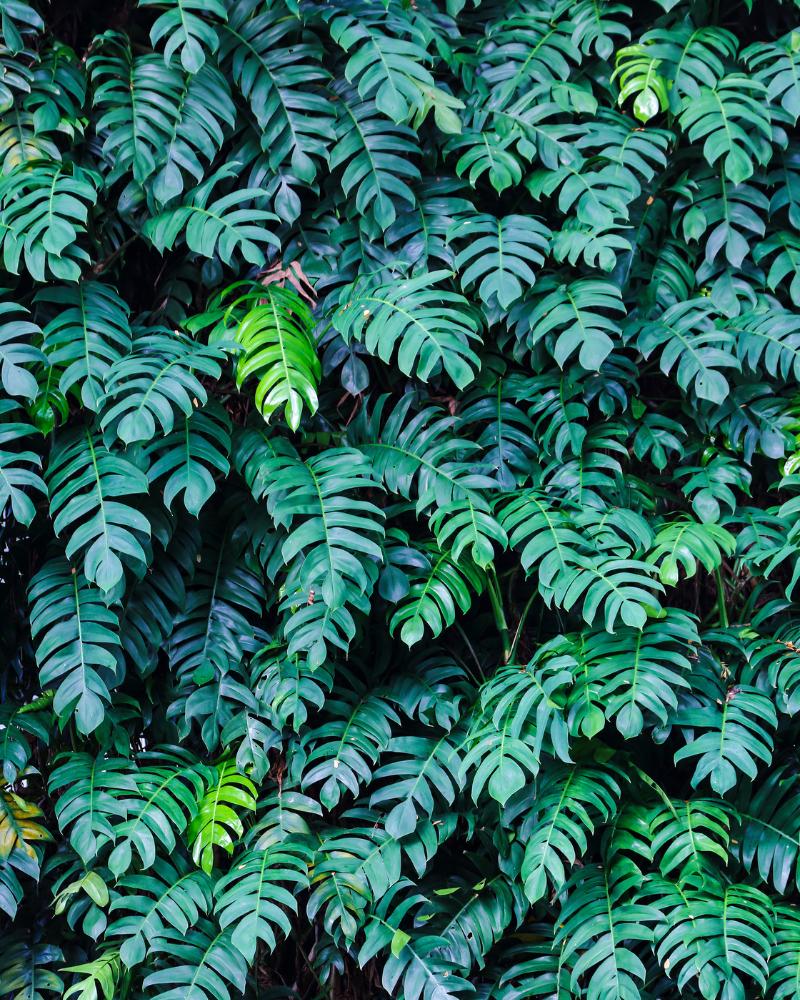
Another crucial factor to consider when growing these plants is the right temperature. Unlike humidity, this plant will do well under room temperature. Setting the temperature at 65-80℉ would suffice.
Since the plant can’t tolerate harsh conditions and extreme temperatures, growing it outside isn’t recommended.
Additionally, ensure that the plant is not placed in places with fluctuating temperatures, such as near windows, heaters, and air conditioners.
Soil and Fertilizer
The Dragon Tail plant is low-maintenance, but it’s crucial to ensure it’s planted under the right conditions first.
This plant will do well in acidic soils with a pH between 5.1 and 6.5. It’s also essential to ensure that the soil is well-aerated and well-draining. This reduces the risk of root rot.
To ensure the plant is planted on the right mix, buy a ready-made aroid mix or make your potting mix.
You’ll need to add perlite, peat moss, and vermiculite to the suitable potting soil. Peat moss and vermiculite improve water and moisture retention, while perlite enhances drainage. Adding orchid bark to the mixture can also increase aeration.
To make the mixture nutrient-rich, you can add compost and earthworm castings. This provides the plant with the right nutrients and reduces the need for fertilizers.
Fertilization is one of the most critical steps in plant care and also one of the trickiest. Here is how to handle the fertilization process.
Fertilizer
First, suppose you are growing your Dragon tail in a mixture enriched with loam-based compost or another ingredient. In that case, there’s no need for fertilization.
To increase the nutrient content in the soil, you can add eco seaweed or eco-aminogro to accelerate growth. To reduce the risk of overfertilization, ensure the fertilizers have been diluted.
Fertilization will need to be done during the growing season. Ensure that you don’t fertilize the plant during the fall or winter. The active growing season for the plant is spring and summer, which is the perfect time to fertilize.
For gardeners who repot their plants every one or two years, there’s no need for fertilization. A good potting mix will have all the nutrients the plant needs for growth.
Repotting
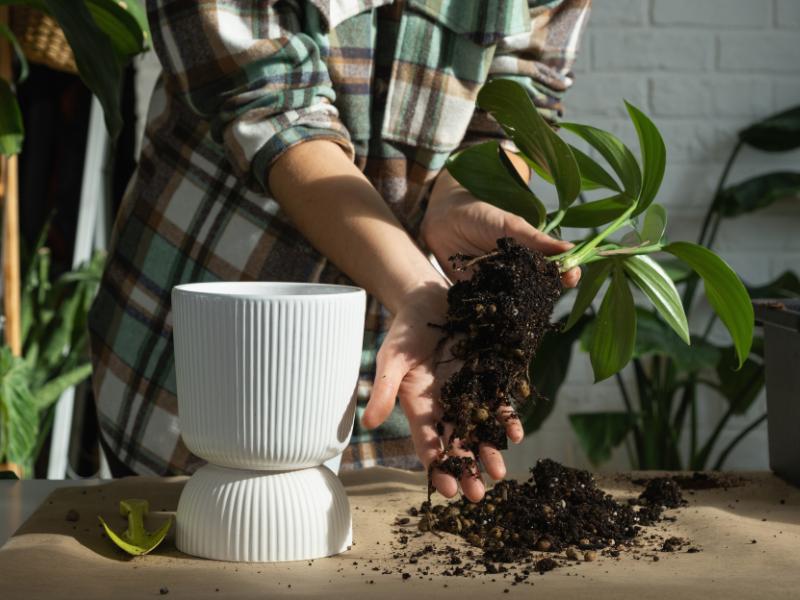
The best time to repot the plant is after the dormancy season (winter and fall).
Ensure you increase the size of the container to give the roots enough room for growth. However, ensure that the size isn’t too large, as this could encourage the development of fungi and increase the risk of root rot.
Choose a pot that’s two sizes larger than the previous pot. Fill the pot with a well-draining potting mix and add some worm castings for nutrients, and your plant is ready for repotting.
Since the Dragon Tail isn’t a fast grower, you’ll not need to repot it often. Repotting the plant once a year should suffice. If the plant doubles in size, repot it to ensure it’s not rootbound, which slows growth.
Propagation
The best way to propagate this plant is through plant cuttings. This plant can be propagated in either water or soil. Both methods are perfect for beginners since they have a high success rate.
Let’s get a detailed look into both methods so you can choose the most preferable one for you.
Propagation in Water
Here is how to grow little dragons from one plant through water propagation.
Step 1: The plant needs to be watered thoroughly one night before the day of propagation to increase the chances of success.
Step 2: Choose a well-hydrated, healthy stem about 2-6 inches with leaves. To grow the new cuttings. You’ll need to generate energy through photosynthesis. Hence, having some foliage is crucial.
Step 3: Remove the leaves at the bottom part of the stem. These leaves will often fail to regrow, and their contamination with water will contribute to root rot.
Step 4: Add the prepared cuttings to a container filled with lukewarm water. Place the container in a bright place where it can receive plenty of indirect sunlight.
The best water to use for this process is filtered water. Tap water can also be used if you let it sit in the open air for about 2 days to evaporate the excess chlorine.
Step 5: To maintain the right levels of humidity, mist the leaves once or twice a week. You can also use a humidifier to maintain the proper humidity.
Step 6: Change the water twice or thrice a week until you notice the growth of new roots on the cuttings.
Step 7: Once you notice the formation of transparent roots on the cuttings, wait till they grow to 1 inch long before transplanting. Ideally, the roots should be about 4 inches (10cm), but 1 inch (2.5 cm) should do.
Step 8: In a small pot filled with a well-drained medium, transplant the young cuttings. Adding coco coir to the soil can improve drainage.
Place the pot where it can get at least four hours of light daily, and you have a new Dragon Tail plant.
Propagation in Soil
Many people consider propagation in the soil a risky venture due to the threat of bacterial infection.
However, with the right propagation steps, your new plants will grow in no time. Besides, cuttings can be resistant to bacteria more than you think.
Step 1: As always, ensure the plant is well watered before beginning the propagation process.
Step 2: Create a nursery and fill it with well-draining soil. Plant the cuttings in the middle.
Step 3: Add more soil to the cuttings to ensure they are upright.
Step 4: Cover the nursery with a plastic sheet or any other transplant cover to increase the humidity levels. This also reduces the need for watering the plants frequently.
Step 5: Ensure the tray is placed where it can receive plenty of indirect sunlight or under growing lights. Wait for the development of the roots.
Step 6: Once the cuttings have rooted, transplant them where you want to grow your dragon tail plants. Add some compost to improve the fertility levels of the substrate, and don’t forget about watering.
Pro Tip: The development of new roots will be exhibited by new growth on the cuttings. You can also slightly pull up the cuttings if new roots have developed; there’ll be some resistance.
Cleaning and Pruning
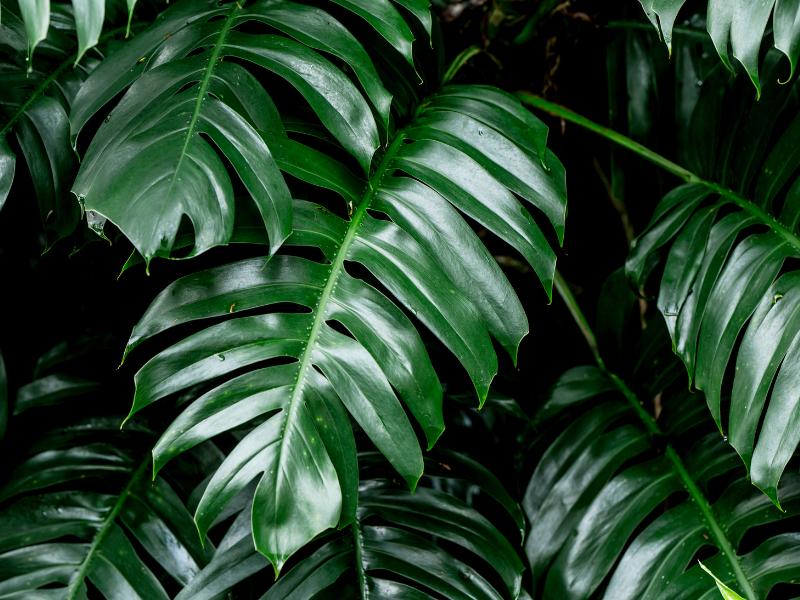
Many gardeners don’t prioritize cleaning plants even though it’s one of the vital plant care processes. Dust not only makes your plants unappealing but also interferes with photosynthesis by reducing the leaf’s surface area.
Besides, cleaning is an easy process. You only need to use a damp cloth to wipe the foliage.
Drying the leaves after wiping is essential since wet leaves can lead to the plant developing leaf spots.
What should be even more motivating when cleaning the leaves is that it humidifies the plant. By cleaning the leaves, you don’t have to worry about increasing humidity using alternative methods.
Pruning
Pruning reduces unnecessary weight in the plant and promotes better health by removing leaves that don’t serve their purpose. Plants create energy through photosynthesis, which should not be wasted on dead foliage.
Another reason to prune your plants is to reduce the spread of diseases such as leaf spots and powdery mildew. Removing infected leaves reduces the chances of other leaves getting infected.
Moreover, pruning gives you a chance to shape the plant according to your preferences.
When pruning the leaves, always use specialized and sterilized equipment such as scissors and shears. Unsterilized tools may cause infection of the plant by microorganisms and bacteria.
Common Pests and Diseases
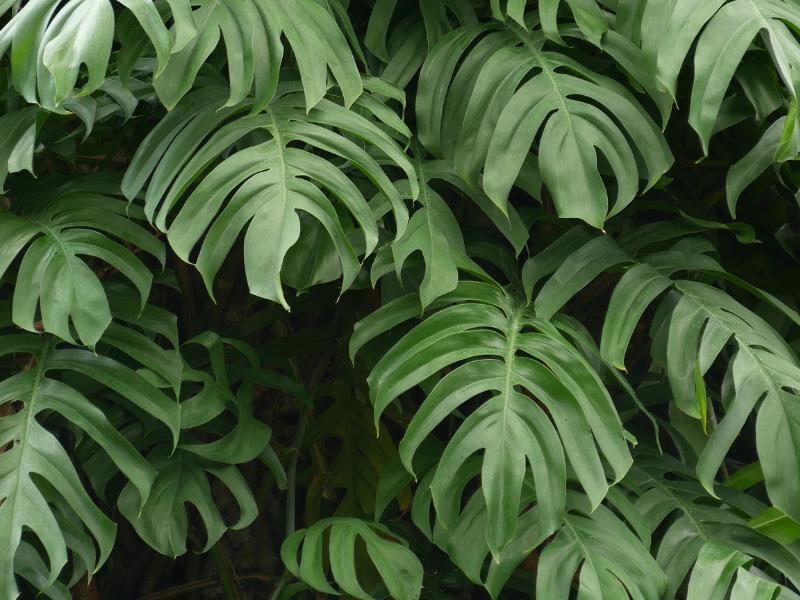
Unfortunately, the Dragon Tail plant is also susceptible to pests and diseases. However, this is not a great cause for concern since most of these issues can be avoided. If not, they can be treated relatively easily.
Here are some common pests and diseases that attack this plant.
Pests
Like many other house plants, pests such as mites, aphids, and mealybugs will attack the Dragon Tail plant.
If the infestation is not severe, you can remove the pests by hand one by one.
For severe infections, you’ll need to use more sophisticated methods, such as neem oil or insecticides. This method can treat the plant without harming it.
It’s crucial to ensure that the infected plant/s are separated from the healthy ones to minimize the spread.
Diseases
While the Dragon Tail plant is resistant to most diseases, it can get infected when not taken care of appropriately.
Overwatering the plant can cause root rot, a vicious fungal disease that can cause the plant’s death if not treated.
However, this disease can be treated if you notice it in time. Signs like withering, yellow foliage, and stunted growth could signify root rot, so checking the plant’s root is crucial.
Remove dirt around the roots and check for mushy, black, or brown roots. Remove any unhealthy roots from the plant by using sterilized equipment. Now repot the plant in a new pot filled with fresh, well-drained soil.
To prevent root rot from occurring, ensure the plant is watered only when the topsoil is dry.
Features of the Dragon Tail Plant
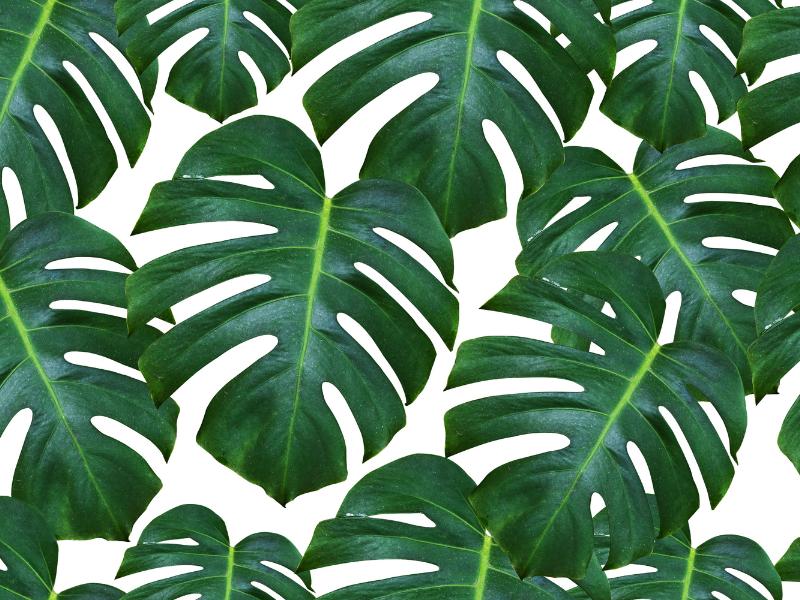
Now that you know how to take care of the Dragon Tail Plant, it’s essential to understand its features, growing habits, and how it looks and behaves.
In this section, we’ll outline the main features of the plant to give you insights into how these climbers should be.
Stem
The Dragon Tail is a climber and can grow to about 3 feet if it’s taken care of and staked correctly.
The plant climbs using aerial roots that’ll climb on the moss pole, trellis, or stake set up for the plant.
Growing the plant in a hanging basket is one good way to ensure they have enough space and depth around them to spread.
Foliage
This majestic Dragon is an evergreen. Its leaves maintain a dark green hue throughout the year.
Mature and young leaves will differ in shape and size. The young leaves are oval-shaped and pointed at the ends; they are arrow-like.
Over time, lobes will appear on the young leaves and begin taking shape as mature serrated leaves.
Mature leaves change not only in shape but also in texture. Young leaves will be smooth, while mature leaves lose the smooth texture and become leathery and serrated. Mature leaves are between 8-20 inches (20-50 cm).
Flowers
The beauty of this plant is not just in its beautiful foliage but also in its flowers, even though that’s not what it’s known for.
The flowers are green-white in color and start appearing in the summer. The inflorescence consists of spathe and spadix.
In most cases, these flowers will be noted when the plant grows in its natural habitat with perfect conditions. Even though it rarely blooms indoors, the leaves are sure a sight to behold!
Other Common Facts
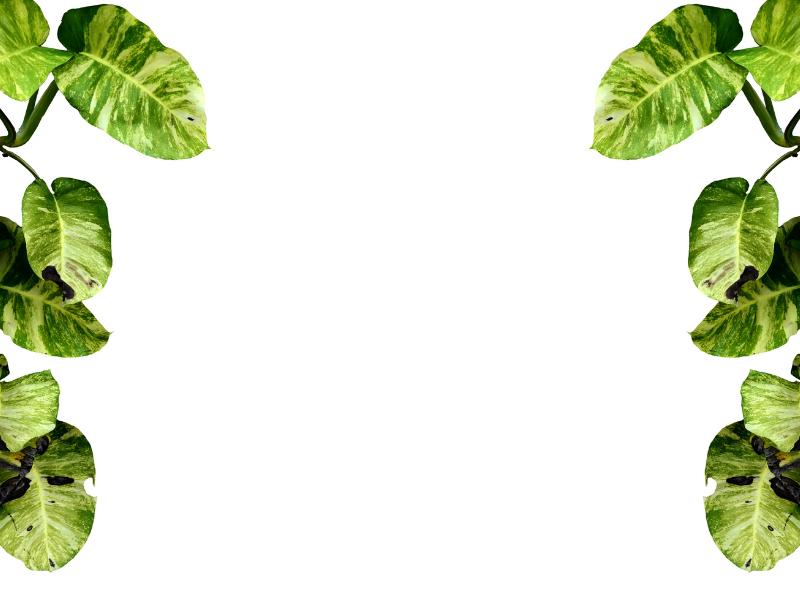
Now that we are done with the basics about this plant, it’s also good to learn some historical facts about the plant and its various benefits. It’s also vital to note that the Dragon tail is toxic, as discussed later in this section.
Name, Origin, and Background
The Dragon Tail plant comes from the Araceae family that originates from the Philippines and other Southeast Asian countries.
Filipinos refer to the plant as the Tibatib plant or the Tonga vine. This vine has a close resemblance to the pothos and monstera plants. The Dragon Tail is often confused with the Scindapsus pictus (Satin pothos), which belongs to the same genus (Epipremnum pictum Argyraeum) but with different species.
Same Name, Different Plants
Two plants here share the same name but in two different genera.
The common dragon tail plant is the Epipremnum pinnatum. The Rhaphidophora decursiva is also referred to as the Dragon Tail, but don’t mistake one for the other.
This is because the R. dercursiva has deep green leaves that are way larger than the E. pinnatum.
Benefits
The Dragon Tail plant isn’t just beautiful but also has a host of other benefits that’ll make your indoors more comfortable. For one, the plant is a natural air purifier. This means it filters toxins such as benzene, toluene, and formaldehyde, making your environment healthy.
Suppose you are lucky to grow a variety of plants such as Epipremnum or Philodendron genera. In that case, you’ll create a beautiful indoor jungle and an effective natural air filter. How about that!
Toxicity
The only downside to this Dragon is its toxicity to humans and pets. Contact with the plant’s sap can cause skin irritation. If ingested, the plant can cause burning and swelling of the tongue, lips, and throat.
In animals, the plant causes excessive drooling, vomiting, and nausea.
While the Dragon Tail plant doesn’t cause severe health damage, you should contact your vet or doctor if ingested. Better safe than sorry!
Common Questions About the Dragon Tail Plant
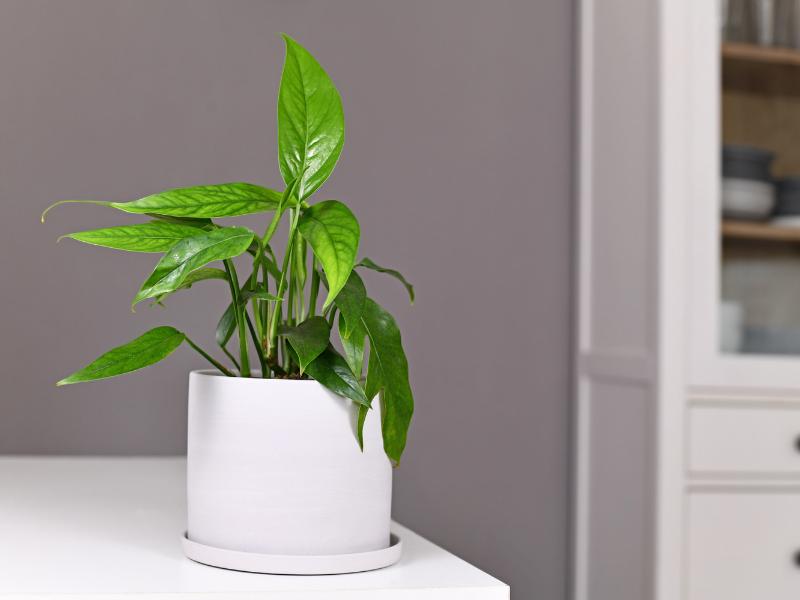
We have even more interesting facts about the Dragon Tail plant.
So we have saved the best for the last with these answers to the most common questions about this indoor climber.
Is the Dragon Plant rare?
No, the dragon tail plant isn’t a rarity. Which is a good thing because you, too, can get one. Even though the plant naturally occurs in tropical climates in Southeast Asia and parts of Australia, it’s common in many homes.
You can get this plant online for approximately $40.
Why is it called the Dragon Tail plant?
Easy! It’s because its leaves are shaped like the notches and spikes on a dragon’s tail.
In other places, the plant is also known as the centipede Tongavine due to its ability to climb.
Is the Dragon Tail plant a philodendron?
No, philodendrons and the Dragon Tail plant belong to two different genera.
Philodendrons belong to the philodendron genus, while the Dragon Tail plant belongs to the Epipremnum genus.
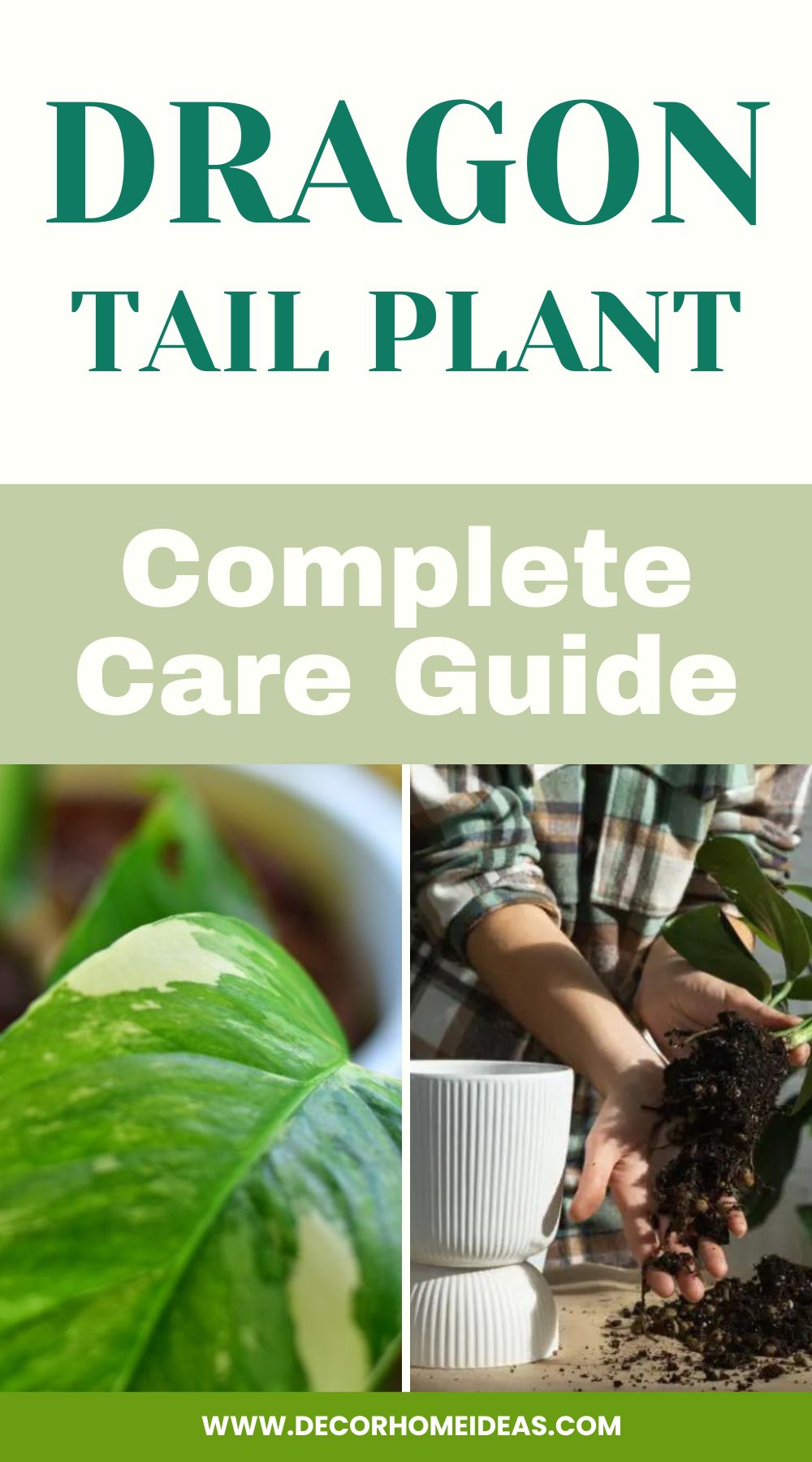
Conclusion
Just like a dragon, the Dragon Tail is truly majestic among tropical rainforest plants. With its climbing ability, it’ll make for a good plant for your indoor hanging baskets.
The plant is also one of the low-maintenance indoor plants, only needing indirect light, a well-drained substrate, and watering when the topsoil is dry.
While it may have one distinct look, it’s known by different names in different parts of the world. Knowing its common names and the varieties it shares names with could be crucial in choosing the right plant for you.
So, why don’t you go ahead and try your hand at taming a real dragon by starting with the Dragon Tail!

